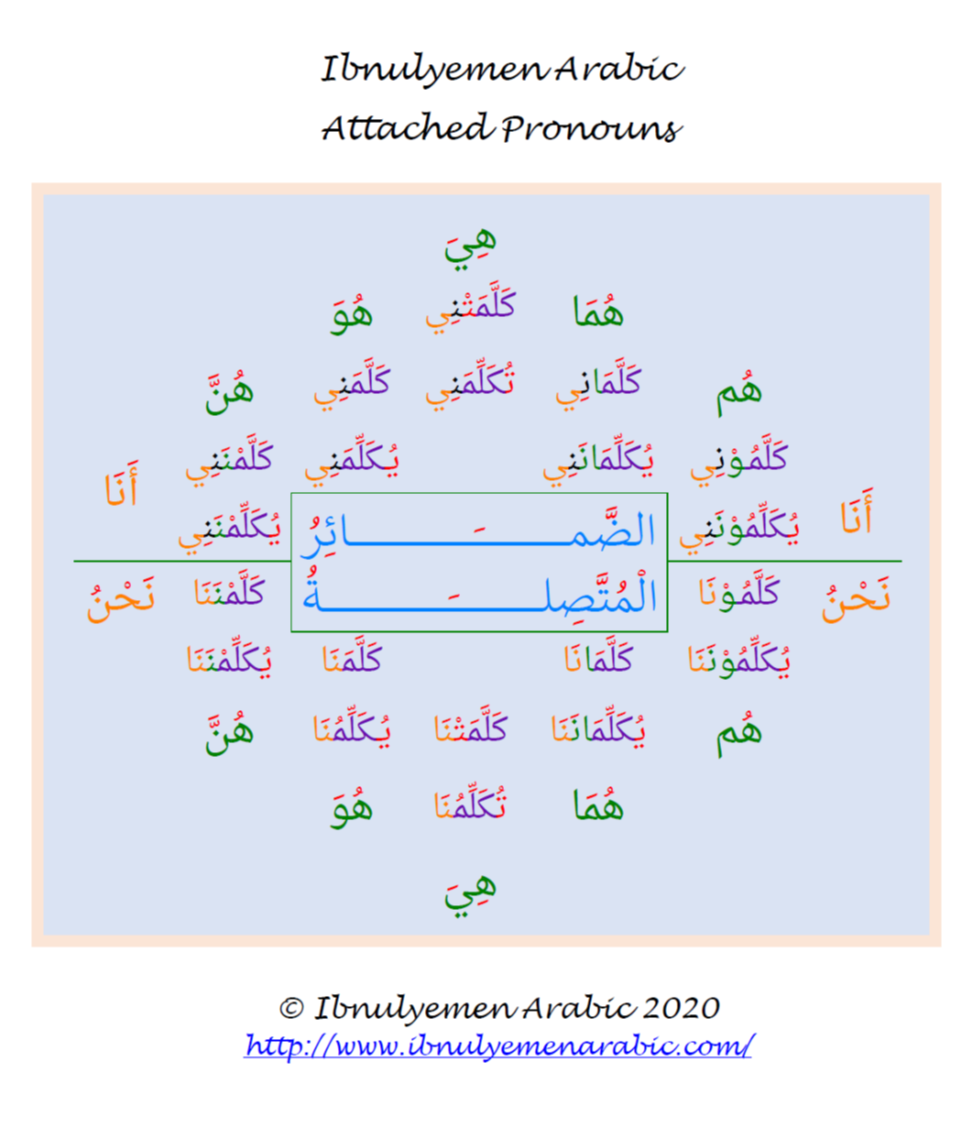Attached pronouns in Arabic are the pronouns that we attach to verbs, nouns, prepositions, or particles. Generally speaking, pronouns in Arabic are separate, attached, or implicit (i.e. implied or not overt). The separate pronouns in Arabic are similar to the subject pronouns found in most world languages in addition to the dual and feminine forms that exist in Arabic. As for the attached pronouns in Arabic, we append them to nouns, prepositions, adverbs, particles, and verbs. So, they are overt. However, we can only infer the implicit pronouns from the structure of the verb. So, they are covert. For every separate pronoun, there is a corresponding attached pronoun. Their grammatical functions in sentences vary according to the type of the word we attach them to.
When we add the attached pronouns to common nouns, they are more like the English adjective pronouns. For example, in the words كِتَابِي, كِتَابُكَ, كِتَابُهُ, and كِتَابُهُم, the pronominal suffixes ـي, ـكَ, ـهُ, and ـهُم mean my, your, his, and their, respectively. If we attached them to prepositions or adverbs, they function as objects of these prepositions / adverbs. Take the words مَعَنَا “with us” and إِلَيْكُم “to you”. The pronominal suffixes ـنَا and ـكُم are the object of the prepositions.
With verbs, the attached pronouns function as a subject or an object. For instance, in كَتَبْتُ “I wrote”, سَمِعْنَ “they (fem.) heard,” and ضَرَبَا “they both beat”, the pronominal suffixes ـتُ, ـنَ, and ـا (i.e. I, they (fem.), and they both, respectively) are the subjects of the verbs. Similarly, in كَتَبْتُهُ “I wrote it”, سَمِعْنَنَا “they (fem) heard us”, and ضَرَبَاه “they beat him,” the pronominal suffixes, ـهُ, ـنَا, and هُ are the object of the verbs, hence I wrote it; they (fem.) heard us; and they (both) beat him, respectively.
As for particles, the function of the attached pronoun varies according to the type of particle. For an illustration, if we attach a pronoun to إِنَّ or any of its sisters (i.e. أَنَّ, لَكِنَّ, لَيْتَ, and لَعَلَّ), it functions as a topic مُبْتَدَأ. We use these particles with nominal sentences (i.e. topic مُبْتَدَأ + predicate خَبَر). Normally, we change topics which are separate pronouns into their corresponding attached pronouns when إِنَّ or of its sisters is added to the start of the nominal sentence.
In this e-book, you will find tables of the attached pronouns with examples. We hope that our presentation of these essential lexical items makes your Arabic learning easier and speedier.

Attached Pronouns in Arabic